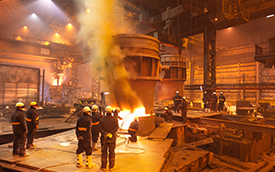
As I delve into the world of natural gas markets, I’m often struck by their complexity and volatility. These markets are not just about supply and demand; they reflect geopolitical tensions, technological advancements, and environmental considerations. Understanding these dynamics is crucial for anyone looking to navigate this ever-evolving landscape.
The Fluid Nature of Natural Gas Markets
natural gas markets are characterized by their fluidity, influenced by a myriad of factors ranging from weather patterns to international relations. For instance, unexpected cold snaps can spike demand dramatically, while political instability in key producing regions can disrupt supply chains. Additionally, the rise of renewable energy sources adds another layer of complexity as countries strive for greener alternatives while still relying on natural gas as a transitional fuel. This interplay creates an environment where prices fluctuate rapidly and unpredictably.
Mysteel’s Insights into Market Trends
Mysteel has become a pivotal player in providing insights into various commodity markets, including natural gas. Their comprehensive data analysis helps stakeholders understand market trends better and make informed decisions based on real-time information. By leveraging advanced analytics tools, Mysteel offers valuable forecasts that highlight potential shifts in pricing due to external influences such as policy changes or economic developments. This kind of intelligence is essential for investors who want to stay ahead in the competitive arena of natural gas trading.
Navigating Challenges within Natural Gas Markets
The challenges faced within natural gas markets are multifaceted and require strategic thinking from industry players. From regulatory hurdles to infrastructure limitations, companies must adapt quickly to maintain competitiveness. Moreover, with increasing scrutiny over carbon emissions associated with fossil fuels like natural gas, businesses are under pressure to innovate towards cleaner technologies or face potential backlash from consumers and regulators alike.
The Impact on China Commodities Prices

China’s commodities prices have been significantly impacted by fluctuations in global natural gas markets. As one of the largest importers of liquefied natural gas (LNG), China’s demand directly affects pricing structures worldwide. Recent policies aimed at reducing coal consumption have further intensified this relationship; as China pivots towards more sustainable energy sources like LNG, it inevitably drives up competition among suppliers globally—leading to price hikes that ripple through other commodity sectors.
Click China commodities prices.
A Concluding Reflection on Natural Gas Markets
In conclusion, navigating the intricate web woven by natural gas markets requires both awareness and adaptability amidst constant change. The interplay between local demands and global events shapes how we approach energy consumption today—and will continue shaping our future choices tomorrow. As we move forward into an era increasingly defined by sustainability concerns alongside traditional energy needs, understanding these dynamics becomes even more critical for all stakeholders involved.

